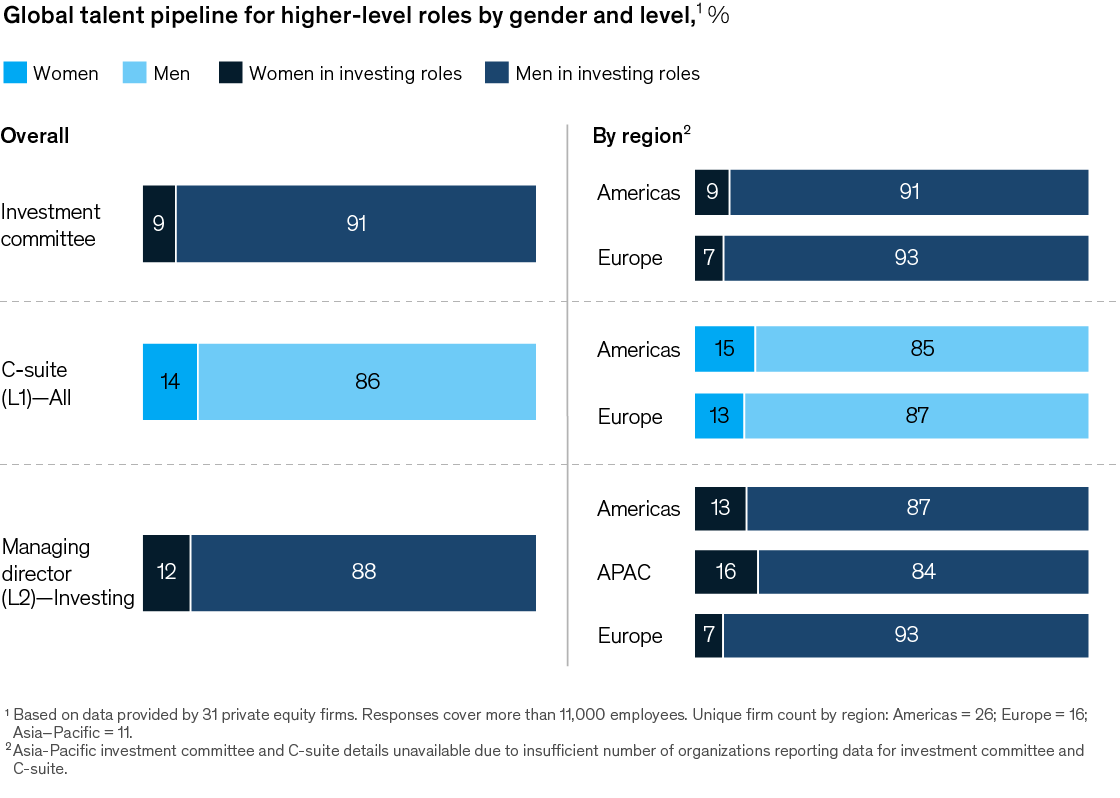| | | |
| |
| |
|
Insights and strategies to nurture diversity, equity, and inclusion in the workplace. In your mailbox every two weeks. |
|
|
|
In this issue, we look at an inaugural study of gender and ethnic/racial diversity in the $10 trillion global private-markets industry. News flash: gender and racial/ethnic diversity at private equity (PE) firms remain low, but institutional investors are eager to see more progress. Top investment officers say they would allocate more than twice as much capital to more diverse PE teams when choosing between otherwise comparable teams. We also head over to the metaverse, where women are already a powerful user base—but where the gender gap in leadership roles is substantial. Plus, some reader reactions to our Women in the Workplace 2022 research.
|
|
|
| |
|
The PE industry is expanding
workforce diversity. The ensuing
value could help motivate
even more. |
|
|
| |
| |
| |
| | | |
| |
|
| | | |
| |
| | |
We spoke with McKinsey partner Alexandra Nee, coauthor of The state of diversity in global private markets: 2022, to learn more about the research for this report.
1. What’s your biggest takeaway from this report?
We need more longitudinal data [which tracks the same type of information on the same subjects over a period of time], but we have found positive signs that the industry is making progress on improving gender and ethnic/racial diversity on investing teams. But there is still more opportunity for progress. Aggregating diversity statistics to a firmwide number masks the diversity of PE deal teams, given the higher percentage of minorities in noninvesting roles today. By disaggregating the data, we found that globally, women on average comprise only 12 percent of all MD investing roles in PE firms.
2. Did anything in the results surprise you?
Chief investment officers at top institutional investors across the globe showed a willingness to invest more capital with diverse deal teams, all else equal, with two times the capital allocated to the more gender-diverse deal team and 2.6 times the capital allocated to the deal team with more ethnic/racial diversity.
3. Where do you see signs of progress?
Progress is being made globally on gender diversity. But understanding regional differences will be key to effectively tailoring initiatives to support progress on diversity, equity, and inclusion [DEI] in private markets. For example, while the Asia–Pacific region has the most women in investing compared with Europe and the Americas—20 percent across all investing roles—it also had the largest drop-off in share of women from VP to principal level compared with other regions. This suggests that initiatives to improve gender diversity in Asia–Pacific would be different from those that would most efficiently improve DEI within PE firm offices in Europe or the Americas.
|
|
|
| |
| | |
| |
| | |
We asked our readers in a previous issue to share those findings from our Women in the Workplace 2022 research that resonated particularly powerfully with them. Here’s what two readers had to say.
“Many of your conclusions resonated with me. As a Eurasian female executive, I have faced many biases throughout my career. As many women have called out, you have to be twice as qualified, work twice as hard, and always be two steps ahead of all your male colleagues. It is going to take many more women making it to C-suite roles as role models and sponsoring other women up the ladder with them. Stereotypes around what a leader looks and acts like—just Google ‘CEO’—will need to change dramatically from what they are today. I just hope this happens in my daughter’s lifetime.” —Former GM/VP at a global insurance company
“This issue resonated particularly strongly. Increasingly, I believe that getting [through to] those who are not yet convinced about why DEI makes good commercial/business/ethical sense means including them in the conversation. It’s one of the Big Problems in society we need to address.” —Technology leader
|
|
|
| |
| | |
|
– Justine Jablonska (she/her/hers), editor, New York
|
|
|
| | | |
This email contains information about McKinsey's research, insights, services, or events. By opening our emails or clicking on links, you agree to our use of cookies and web tracking technology. For more information on how we use and protect your information, please review our privacy policy. |
|
You received this email because you subscribed to the Intersection newsletter. |
|
|
Copyright © 2022 | McKinsey & Company, 3 World Trade Center, 175 Greenwich Street, New York, NY 10007 |
|
|
|
|
|






